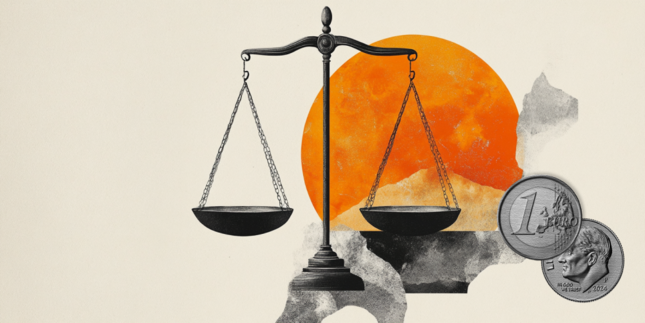Recession fears have receded in the US as job creation has proved resilient to the decline in business spending and the yield curve has returned to a normal spread after a brief inversion in late August.
Over the past two years the labor market has been the backbone of the US economic expansion. Plentiful jobs, rising wages and historically low unemployment rates have kept the consumer side of the economy humming.
American firms have steadily produced more jobs than there were workers to fill them. Even though non-farm payrolls declined from a three-month average of 245,000 in January to 176,000 in October jobs remained well above the number of new entrants to the labor markets.
Consumer confidence has reflected the strength of employment. The average in the Michigan Consumer Sentiment Survey of the past two years has been the highest and most stable in over two decades.
Reuters
Retail sales kept pace with wages increases and the rise in disposable income. The control group component of GDP shows a steady if unspectacular record of gains for the last two years.
Reuters
Although the consumer economy continued to operate with vigor a combination of business, political and economic factors combined in late summer to produce the most serious recession scare since the financial crisis.
Business spending had been decreasing for most of the last two years. In July the 12-month moving average for the durable goods category of non-defense capital goods, an oft used proxy for business investment, turned negative for the first time in almost three years.
Reuters
That same month the 3-month moving average in payrolls fell to 135,000 its weakest in seven years.
Reuters
When the decrease in payrolls and the cessation of business spending were placed against the background of slowing domestic activity, GDP had fallen from 3.1% in the first quarter to 2.0% in the second and the global slippage in growth it seemed as if the longest post-war expansion might be reaching its limit.
If job growth continued to fall then the last support of US GDP, consumer spending, might disappear with employment. With business investment already moribund, the risk of recession could rise sharply.
Behind the eclipse in business spending was the enervating US China trade war. In mid-to late summer it seemed as intractable as ever with a new round of US tariffs set to take effect in the fall and no negotiations scheduled. In Europe the Brexit puzzle remained unsolved and an October 31st no-deal exit a live option.
Mirroring the concerns for the US economy was the collapse and for a few days in late August, the inversion, of the 2-10 Treasury spread. Long considered one of the most reliable recession indicators it touched a peak reversal of 5 basis points on August 28th.
Reuters
Answering these concerns the Federal Reserve cut its base rate by 0.25% for the first time in a decade on July 31st and then again on September 18th and indicated that more reductions lay ahead.
But just weeks later, by mid-October the economic and political directions had changed remarkably.
Payrolls did not falter. August’s figures released on September 6th and then revised ended at 219,000, September’s were 180,000. Unemployment dropped to 3.5% in October and third quarter GDP proved to be stable at 1.9%.
Most importantly on October 11th President Trump announced a deal in principle with China for what he called a phase one agreement on trade, thus removing the threat of an ever escalating trade and tariff war.
Credit spreads responded immediately. Within three weeks, by the close on November 8th, the 2-10 Treasury spread was out to 27 points, normal for the conditions of the past two years.
By the first week of November all three major US equity averages had reached new records.
The US China trade deal, which will not be signed until sometime in December, is not a guarantor for US, Chinese and global growth. It is, however, an effective recession preventative.
Information on these pages contains forward-looking statements that involve risks and uncertainties. Markets and instruments profiled on this page are for informational purposes only and should not in any way come across as a recommendation to buy or sell in these assets. You should do your own thorough research before making any investment decisions. FXStreet does not in any way guarantee that this information is free from mistakes, errors, or material misstatements. It also does not guarantee that this information is of a timely nature. Investing in Open Markets involves a great deal of risk, including the loss of all or a portion of your investment, as well as emotional distress. All risks, losses and costs associated with investing, including total loss of principal, are your responsibility. The views and opinions expressed in this article are those of the authors and do not necessarily reflect the official policy or position of FXStreet nor its advertisers. The author will not be held responsible for information that is found at the end of links posted on this page.
If not otherwise explicitly mentioned in the body of the article, at the time of writing, the author has no position in any stock mentioned in this article and no business relationship with any company mentioned. The author has not received compensation for writing this article, other than from FXStreet.
FXStreet and the author do not provide personalized recommendations. The author makes no representations as to the accuracy, completeness, or suitability of this information. FXStreet and the author will not be liable for any errors, omissions or any losses, injuries or damages arising from this information and its display or use. Errors and omissions excepted.
The author and FXStreet are not registered investment advisors and nothing in this article is intended to be investment advice.
Recommended Content
Editors’ Picks

AUD/USD: Further gains need more conviction
AUD/USD reversed two-daily pullbacks in a row on Tuesday, staging a decent comeback from Monday’s troughs near 0.6220 to the boundaries of the 0.6300 hurdle propped up by the RBA hawkish hold and firm data from Chinese business activity.

EUR/USD remains offered below 1.0800 ahead of “Liberation Day”
EUR/USD came under extra downside pressure on Tuesday, returning to the sub-1.0800 region on the back of tepid gains in the US Dollar and rising caution prior to Trump’s announcements on Wednesday.

Gold nears $3,100 as fears receded
Gold is easing from its fresh record high near $3,150 but remains well supported above the $3,100 mark. A generalised pullback in US yields is underpinning the yellow metal, as traders stay on the sidelines awaiting clarity on upcoming US tariff announcements.

Bitcoin just as vulnerable as major assets – Anthony Yeung, Global Head of Strategic Development at CoinCover
Bitcoin trades under the $85,000 mark, holding on to nearly 3% gains on Tuesday ahead of Donald Trump’s Liberation Day. Crypto traders remain fearful, the sentiment reads 34 on a scale of 0 to 100 on the Fear & Greed Index.

Is the US economy headed for a recession?
Leading economists say a recession is more likely than originally expected. With new tariffs set to be launched on April 2, investors and economists are growing more concerned about an economic slowdown or recession.

The Best brokers to trade EUR/USD
SPONSORED Discover the top brokers for trading EUR/USD in 2025. Our list features brokers with competitive spreads, fast execution, and powerful platforms. Whether you're a beginner or an expert, find the right partner to navigate the dynamic Forex market.